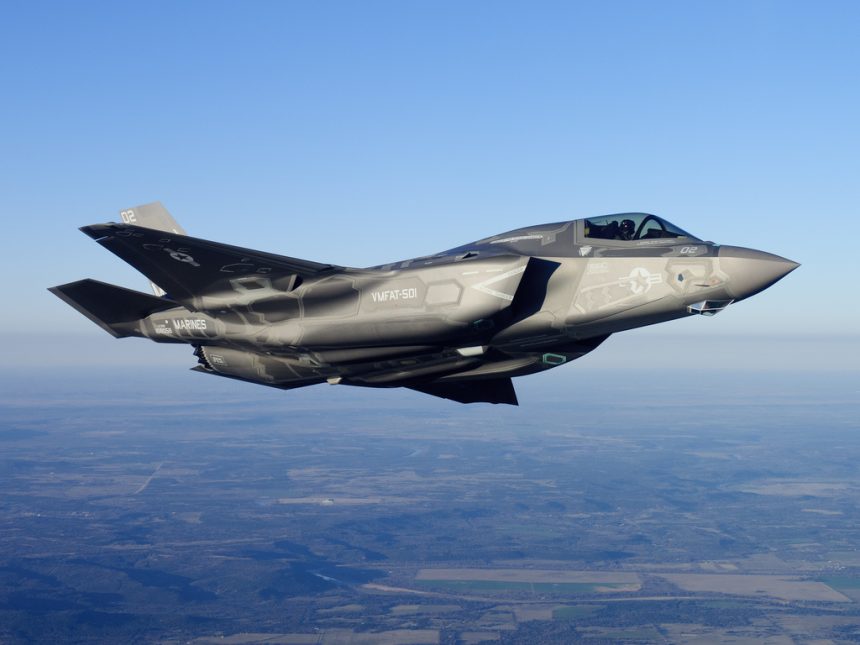Update Feb. 23 22.47 GMT
Lockheed Martin has just released a media update that provides some interesting figures about the F-35 System Development and Demonstration (SDD) flight test plan. The press release traces the history of the JSF program since the beginning of 2012. However, I’ve modified it a little bit to add some interesting information about the program: either officially released news by partner countries authorities or details reported by media all around the world.
- On Jan. 9, AF-4, an F-35A Conventional Takeoff and Landing (CTOL) test aircraft, reached the highest altitude to date in an F-35; 43,000 feet Mean Sea Level (MSL).
- Lockheed Martin ferried the first two production model F-35B Short Takeoff and Vertical Landing (STOVL) aircraft to the U.S. Marine Corps on Jan. 11. The aircraft, known as BF-6 and BF-8, are now assigned to the 2nd Marine Aircraft Wing’s Marine Fighter/Attack Training Squadron 501 residing with the host 33rd Fighter Wing at Eglin Air Force Base (AFB), Fla.
- Demonstrating the ongoing maturation of the F-35 integrated sensor suite, AF-3, an F-35A CTOL test jet, completed the first low Distributed Aperture System (DAS) approach on Jan. 17.
- On Jan. 18, the first night flight in the history of the Lockheed Martin F-35 program was completed at Edwards AFB, Calif. Piloted by Lockheed Martin test pilot Mark Ward, AF-6, an F-35A CTOL test jet, took off at 5:05 p.m. PST and landed after sunset at 6:22 p.m.
- With the ferry flight of BF-7, an F-35B STOVL, Eglin AFB, Fla., became home of the largest F-35 fleet in the DOD on Jan. 19. BF-7 was the 23rd F-35 Lightning II delivered to the DOD.
- On Jan. 20, citing the progress the F-35B STOVL variant made in 2011, Secretary of Defense Leon Panetta rescinded probation for the F-35B, almost a full year ahead of schedule.
- The F-35 SDD fleet including AA-1, the original test aircraft, crossed the 2,500 flight hour threshold on Jan. 25.
- During a Media Briefing in Rome, Italy, Tom Burbage, Executive VP of Lockheed Martin and General Manager of F-35 Program Integration, said that the F-35C (Carrier Variant) was fixed with a new tailhook system that will be tested beginning next April, making arrested landing on aircraft carriers possible after the series of failed tests. “We will solve all issues” he said.
- On Jan. 30 the Associated Press reported that Australia is reviewing its purchaase schedule for 12 F-35 Joint Strike Fighters.
- A BAC1-11 configured with the F-35’s AN/APG-81 active electronically scanned array (AESA) radar and the AN/AAQ-37 infrared distributed aperture system (DAS) has taken part to the Bold Alligator 2012 exercise.
- On Feb. 7 a UK Ministry of Defence spokeswoman announced that Britain will not make final decisions on the overall number of F-35 before the next planned Strategic Defence Review (in 2015).
- On Feb. 15, Italian Minister of Defense announced Italy’s plan to purchase 90 F-35s. The aircraft will be delivered to four Italian Air Force squadrons at Amendola and Ghedi, and one Navy squadron at Grottaglie (equipped with F-35B that will also operate from Cavour aircraft carrier).
- On Feb. 16 at Edwards AFB, Calif., AF-1, an F-35A CTOL test jet, flew the first external weapons test mission in program history.
- On Feb. 17 the Government of the Netherlands announced that the first F-35 designated for the RNlAF had its jet engine installed. The Netherlands has ordered two JSFs as test aircraft.
- On Feb. 19 the Canadian Press reported that Canadian Defense experts are considering a further upgrade to the aging RCAF F-18s (CF-188s in the local designation) to fill the gap until the delivery of the first F-35s, expected in 2016.
- On Feb. 21 Royal Air Force test pilot Squadron Leader Jim Schofield flew CF-2, the Carrier Variant of the F-35 that will be known as Joint Combat Aircraft in UK.
- On Feb. 22, six days after the first F-35A CTOL (Conventional Take Off and Landing) had flown with external stores, even the STOVL (Short Take Off and Vertical Landing) variant of the Joint Strike Fighter, flew for the first time with external weapons.Noteworthy, along with the AIM-9X carried by the CTOL, the F-35B carried a never seen before white 25 mm gun pod on the centerline.
- On Feb. 23 Turkey confirmed its plan to buy 100 F-35s for 16 billion USD. “In the first stage, orders will be given for two F-35 planes. Turkey plans in total to buy 100 F-35 warplanes” the Minister of Defense said.
Cumulative flight test activity totals for 2012 through Feb. 20 are provided below:
- F-35A CTOL jets have flown 46 times.
- F-35B STOVL aircraft have completed 45 flights.
- F-35C Carrier Variant (CV) jets have flown 23 times.
From the start of flight testing in December 2006, F-35s have flown 1,704 times, including the production-model flights and AA-1, the original flight test aircraft.
Image credit: Locheed Martin
Related articles
- Photo: Lockheed Martin F-35′s first mission with external weapons (theaviationist.com)
- Italy buys its first three F-35s. With a shocking announcement: “a JSF will cost less than a Eurofighter Typhoon” (theaviationist.com)
- “The F-35 remains essential to the future of air superiority” Panetta says. And Lockheed Martin reassures: “we will solve all JSF problems.” (theaviationist.com)
- F-35B Finally on track? (theaviationist.com)










